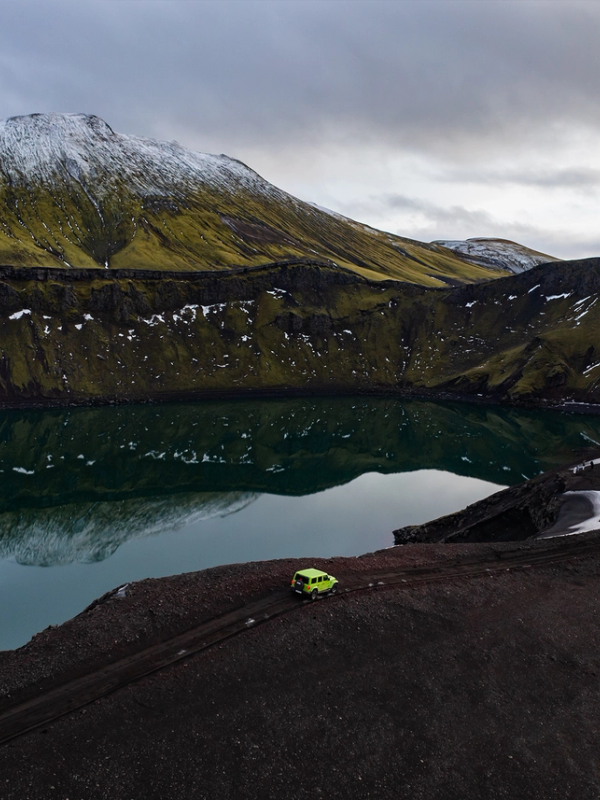
F-Roads in Iceland: Full Guide for Adventures & Safety
Iceland’s highlands are wild and beautiful—places with volcanic deserts, valleys carved by glaciers, and hot springs surrounded by rough mountains. The only way to get there is on F-roads, Iceland’s mountain routes. These aren’t normal roads; they’re bumpy, unpredictable, and need a 4x4 vehicle to drive. If you’re using one of our 4x4 campervans, F-roads lets you explore and camp in some of the most remote spots around. This guide has everything you need to know to travel safely.
What Are Iceland’s F-Roads?
F-roads are the dirt roads that cut through Iceland’s highlands (mostly). They’re not smooth like the Ring Road. Instead, they’re made of gravel and rocks, and sometimes you have to drive through rivers without bridges. The “F” in front of their number, like F208 or F35, means "Fjallvegur," which is Icelandic for "mountain road." A 4x4 with high ground clearance is mandatory to tackle these roads. Regular cars aren’t allowed, and they can’t handle them. Our 4x4 campervans are built for these roads, tough enough for the terrain, and comfortable for you.
F-roads take you to Iceland’s hidden spots, like Landmannalaugar’s colorful mountains or Thorsmork’s glacier valley. The highlands comprise about 40% of Iceland, full of things you won’t see elsewhere—lava fields, mossy plains, and streams from glaciers. These roads aren’t just for getting around; they’re part of the adventure, letting you leave the busy areas behind and see Iceland’s natural side up close.
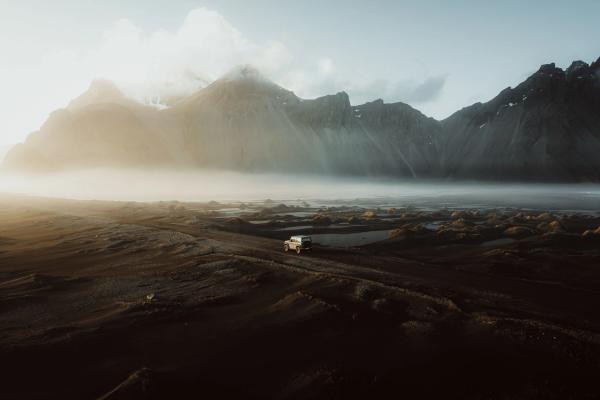
Where to Find the F-Roads
F-roads go through Iceland’s central highlands and other out-of-the-way places, far from towns and tourist stops. They often start where paved roads like Route 1 or Route 26 end. For example, the F208 starts near Hella in the south or Route 26 in the north and heads to Landmannalaugar’s hot springs. The F249 begins near Seljalandsfoss and leads into Thorsmork’s wild land, while the F35 stretches about 180 km from Gullfoss in the south to near Blönduós in the north, linking Iceland’s two sides with a more straightforward highland path.
These roads vary in length and difficulty. The F88 starts near Mývatn in the northeast and runs 90 km through volcanic plains to Askja’s calderas. The F26 is a long 200-250 km trip from Hella to the north, crossing the empty Sprengisandur desert with views of the Vatnajökull glacier. Check road.is for maps and updates—there are no gas stations or stores once you’re out there. Whether you want a short detour or a few days of driving, F-roads give you quiet and great views.
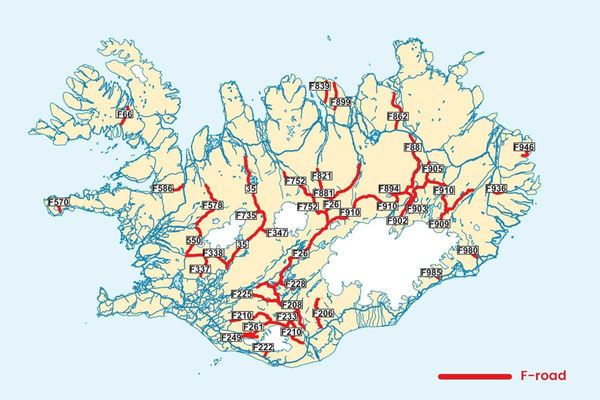
When to Drive the F-Roads
F-roads are only open in the summer because Iceland’s weather gets too rough during the rest of the year. They usually open from mid-June to early July, after the snow melts and the roads get patched up, but it varies—easier ones like F35 might open in late May, while tougher ones like F249 might wait until July. They close by late September or early October when snow returns, sometimes sooner if storms or floods happen. July and August are the best times, with longer days, warmer weather (5-15°C), and better roads, though popular places get more crowded.
It usually varies since the weather pattern is different every year, but here’s a table with the opening dates for each F-road. Again, this can change, but it’s a good starting point.
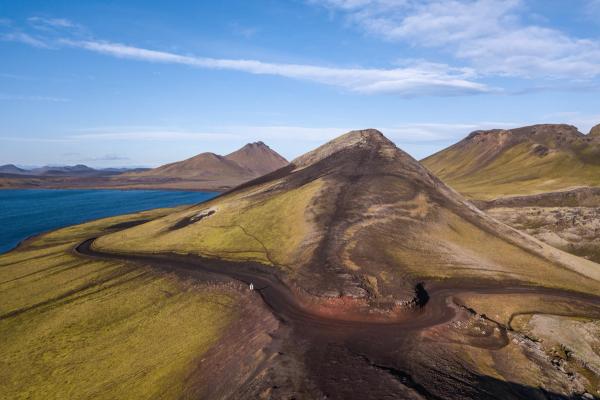
How to Drive F-Roads Safely
F-roads are tricky but worth it, testing your driving with rivers and rough ground. With the proper steps, you can manage them safely in one of our 4x4 campervans.
Navigating River Crossings
Rivers are the most challenging part of F-roads—some are shallow, some deep, and they shift with rain or melting snow. Here’s how to get through:
- Walk the river first to see how deep it is and how fast it’s moving.
- Don’t cross if it’s too deep for your vehicle—our campervans can handle 50-70 cm.
- Drive in at a 45° angle downstream to keep water off the engine.
- Go slow and steady at 5-10 km/h, holding your speed without switching gears mid-river—stopping can leave you stuck.
If you see you can’t cross the river, don’t push it. Being reckless can end up costing a lot of money if the vehicle breaks down.

Handling Gravel and Rocky Terrain
Gravel and rocks need slow driving—stay at 20-40 km/h to avoid slipping, and watch for potholes that can jolt your vehicle. On steep slopes, use low gear and brake lightly to keep control; going too fast can make you slide. Bring a full spare tire, tools like a shovel, tow rope, traction mats, and extra fuel. Our 4x4 campervans are set for the trip, but having supplies ready helps a lot.
Planning Your F-Road Adventure
You’re on your own out there—no food or fuel stops, so get ready ahead of time. Here’s what you need for an easy trip.
Packing Essentials
Bring enough food and water for your whole trip, plus an extra day of provisions. Go with stuff like canned goods, nuts, and dried fruit that lasts. Plan for 2-3 liters of water per person daily. Fill your fuel tank and bring a 10-20 liter jerry can, especially for long roads like F26 with no gas for 250 km. Pack warm clothes like a waterproof jacket, fleece, and thermal layers. If you’re tent camping, bring a sleeping bag that is good to 0°C and a solid tent.
Route and Campsite Planning
Figure out your route carefully—F-roads are slow, so plan for 50-100 km a day at 20-30 km/h to keep it safe. Reserve campsites ahead at busy spots like Landmannalaugar (~2,500 ISK/night) or Thorsmork (~2,500 ISK/night) since they fill up. You can’t camp on public land, but you might be able to sleep in private property if you ask for permission. Towns like Hella or Vik are your last fill-up spots.
Weather and Road Monitoring
Look at road.is daily for road closures and vedur.is for weather—winds over 20 m/s can rock your vehicle, and rain can deepen rivers. Iceland’s weather changes fast, so be ready to adjust. Use offline maps like Maps.me or a GPS since there’s no cell signal, and bring an emergency kit with first-aid stuff, a multi-tool, and a flashlight.
Top F-Roads to Explore
Here are some of the best F-roads to see the highlands, each with something different.
F208 to Landmannalaugar
This road leads to a landscape of red, yellow, and green mountains, lava fields, and hot springs. It’s a medium-tough route with some river crossings, ending at Landmannalaugar—Nice for a free soak in 38-42°C pools or hiking the 2-4 day Laugavegur trail to Thorsmork. If you’re short on time, the 3-4 hour Brennisteinsalda hike has fantastic views. Camp at Landmannalaugar for ~2,500 ISK/night with toilets and showers (plus 500 ISK extra for hot water).
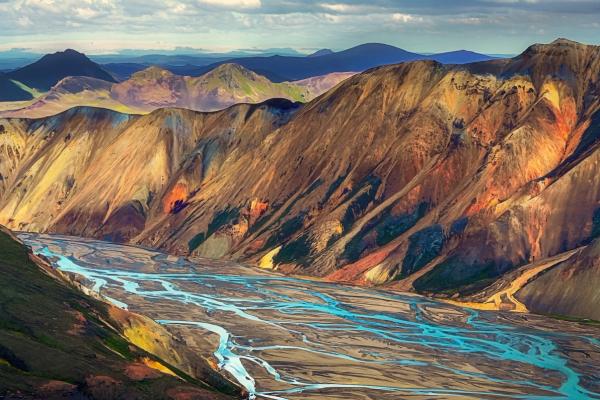
F249 to Thorsmork
This is a rough drive to Thorsmork, a valley with waterfalls, birch trees, and big glaciers like Eyjafjallajökull. It’s a challenging route with multiple river crossings, including the deep Krossá, and steep, rocky parts that test your 4x4. Hike Valahnúkur for 1-2 hours of good views or try the 10-12 hour Fimmvörðuháls trail to Skógar. Camp at Básar or Langidalur for ~2,200 ISK/night, with toilets, showers (extra fee for hot water), and great scenery.
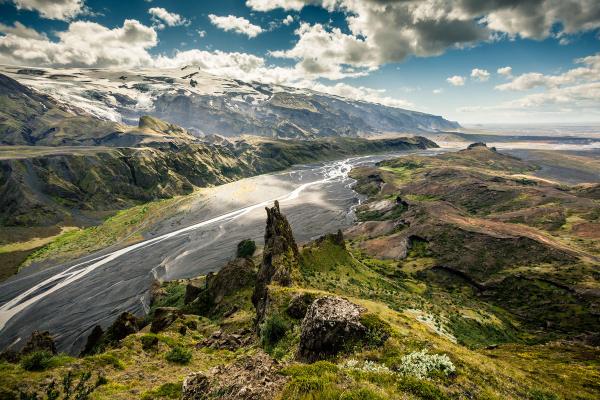
F35 (Kjölur)
F35, also known as the Kjölur Route or Kjalvegur Road, ties Iceland’s north and south with rolling plateaus, hot pools, and far-off glacier views on an easier gravel road. Stop at Hveravellir for a free hot pool or detour to Kerlingarfjöll’s volcanic peaks. It’s great for seeing the highlands without too much trouble. Camp at Hveravellir for ~2,400 ISK/night. The F35 is probably the best route to get used to the F-Roads.
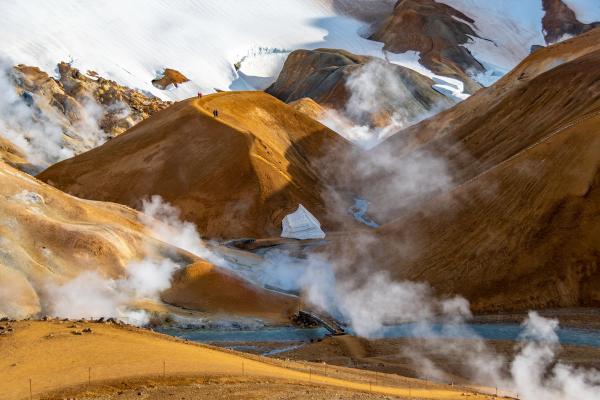
F88 to Askja
F88 feels empty, with volcanic plains leading to Askja’s immense caldera and bright blue crater lakes. It’s a medium-to-hard route with river crossings up to 60 cm deep and long, quiet stretches, but you can swim in Viti’s warm (smelly) waters or check out Öskjuvatn, one of Iceland’s deepest lakes. For more, hike the Holuhraun lava field via F910. Camp at Dreki for ~2,800 ISK/night near Askja.
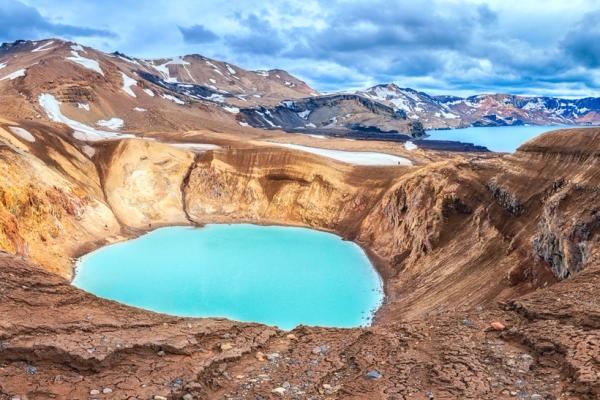
Safety and Etiquette
The highlands are far from help, so safety and care matter greatly. Tell someone your plans or list them at safetravel.is. Phones don’t work out there, so a locator beacon or satellite phone could save you. Call 112 if something goes wrong, but make sure to bring provisions since help might take hours. Check your campervan’s tires, brakes, and fluids every day.
Also, stay on the roads; driving off them is against the rules and hurts the moss, which takes years to grow back. Take all your trash with you since the wind spreads it fast, and leave animals like Arctic foxes alone. What you do keeps the place good for others.
Conclusion
F-roads aren’t easy—slow, bumpy, and sometimes a hassle—but that’s what makes them thrilling. They get you to Landmannalaugar’s colorful hills, Thorsmork’s glacier valleys, or Askja’s weird craters, where you can camp in unique spots. With our 4x4 campervans, you won’t just drive; you’ll live a real-life adventure.
